Lip enhancement has become one of the most popular cosmetic procedures worldwide, offering individuals the opportunity to achieve fuller, more defined lips through various medical techniques. This comprehensive guide explores every aspect of lip augmentation, from dermal fillers to surgical options, providing crucial information about costs, potential side effects, and realistic recovery expectations. Whether you’re considering temporary fillers or permanent solutions, understanding the complete picture ensures you make informed decisions about your cosmetic journey.
✓ Comprehensive cost analysis of different lip enhancement methods
✓ Detailed side effect profiles from temporary swelling to rare complications
✓ Realistic recovery timelines and aftercare protocols
✓ Safety considerations and risk assessment strategies
✓ Procedure comparisons to help choose the right option for your goals
✓ Expert recommendations for optimal results and minimal downtime
Lip Enhancement Risk Calculator
Assess potential risks and complications before your lip enhancement procedure
Personal Information
Medical History
Procedure Details
Your Lip Enhancement Risk Assessment
Your risk assessment will appear here after calculation.
Personalized Recommendations
Disclaimer: This calculator provides a risk assessment based on the information you provide. It is not a substitute for professional medical advice. Always consult with a qualified healthcare provider before undergoing any cosmetic procedure.
Read More Guides & Try More Free Tools:
- Try our Sabrina Carpenter Plastic Surgery: Analysis & Facts
- Try our Demi Moore Plastic Surgery: Facelift Analysis & Facts
- Try our Nicole Kidman Plastic Surgery: Botox & Filler Guide

Table Of Contents
What is Lip Enhancement and How Does It Work?
Lip enhancement refers to cosmetic procedures designed to increase lip volume, improve lip shape, define lip borders, and reduce fine lines around the mouth area. These treatments work through different mechanisms depending on the technique used, but all aim to create more prominent, youthful-looking lips. The cosmetic industry has developed numerous approaches to lip augmentation, ranging from temporary injectable fillers to permanent surgical solutions, each with distinct mechanisms of action and duration of results.
The fundamental principle behind most lip enhancement procedures involves adding volume to the lip tissue or stimulating the body’s natural collagen production. Dermal fillers typically use hyaluronic acid or similar substances that attract and hold water molecules, creating immediate volume while also stimulating long-term collagen production. Surgical options may involve implanting synthetic materials or transferring the patient’s own fat to create permanent volume increases. Understanding these mechanisms helps patients choose the approach that aligns with their aesthetic goals and tolerance for maintenance.
Key Mechanisms of Popular Lip Enhancement Methods:
✓ Hyaluronic acid fillers: Bind to water molecules to create immediate volume while stimulating natural collagen production
✓ Collagen-stimulating fillers: Trigger the body’s natural collagen synthesis for gradual, natural-looking volume improvement
✓ Fat transfer: Uses processed fat from the patient’s own body to add volume that partially integrates with lip tissue
✓ Implants: Surgical placement of synthetic materials to create permanent structural support and volume
✓ Tissue stimulation: Techniques that create micro-injuries to encourage natural healing and collagen production
What Are the Different Types of Lip Enhancement Procedures Available?
The landscape of lip enhancement procedures has expanded significantly over the past decade, offering consumers multiple options tailored to different budgets, desired outcomes, and tolerance for downtime. Understanding the complete range of available procedures represents the first step in making an informed decision about lip augmentation. Current options span non-invasive injectables to surgical interventions, with significant differences in cost, longevity, and risk profiles.
Hyaluronic Acid Fillers dominate the market due to their reversible nature and natural-looking results. Brands like Juvéderm, Restylane, and Belotero offer specific formulations designed for lip augmentation, with differences in particle size, cross-linking, and viscosity affecting their spreadability and longevity. These temporary fillers typically last 6-12 months and can be dissolved with hyaluronidase if patients are unhappy with results. Their popularity stems from this reversibility and the natural-looking volume they create.
Semi-Permanent and Permanent Options include fat transfer and lip implants. Fat transfer involves liposuction of fat from another area of the body, processing it, and injecting it into the lips. While some of the transferred fat is absorbed by the body, the remaining fat cells can establish blood supply and provide long-term volume. Lip implants, such as PermaLip, involve surgical insertion of soft silicone-based implants along the vermilion border to create permanent definition and volume. These options appeal to patients seeking longer-lasting results without repeated maintenance.
Emerging Technologies continue to expand the lip enhancement landscape. Collagen-stimulating treatments like Sculptra work by encouraging the body’s natural collagen production over several months, creating subtle, natural-looking volume. Thread lifts using dissolvable PDO threads can provide lip elevation and slight volume increases. Laser treatments and topical growth factors represent the frontier of non-invasive lip enhancement, offering minimal downtime options for patients seeking subtle improvements.
How Much Does Lip Enhancement Cost in the United States?
Lip enhancement costs vary dramatically based on procedure type, geographic location, practitioner expertise, and the amount of product or complexity of surgery required. Understanding the complete cost picture, including hidden expenses and maintenance costs, helps patients budget appropriately and avoid financial surprises. The price range for lip enhancement reflects the significant differences in materials, time investment, and expertise required for various approaches.
Injectable Filler Costs typically range from $500-$2,000 per session, with most patients spending approximately $600-$800 for one syringe of hyaluronic acid filler. Geographic location dramatically influences pricing, with major metropolitan areas commanding premium prices. The practitioner’s experience and reputation also significantly impact cost, with board-certified dermatologists and plastic surgeons typically charging more than medi-spa injectors. The type of filler brand also affects price, with premium brands like Juvéderm Volbella costing more than generic alternatives.
Surgical Procedure Costs represent a significantly higher initial investment but may prove more cost-effective over time. Fat transfer procedures typically range from $2,000-$5,000, depending on the complexity and whether combined with other procedures. Lip implants cost between $2,000-$4,000, including surgeon fees, facility costs, and anesthesia. These permanent options eliminate the recurring expense of filler maintenance, potentially offering better long-term value for patients seeking permanent solutions.
Additional Cost Considerations often overlooked include consultation fees, touch-up procedures, follow-up appointments, and potential complication management. Maintenance costs for temporary fillers can accumulate significantly over years, making permanent options more economical for long-term planning. Patients should also consider the cost of revisions or reversals, which may be necessary if unsatisfied with results. Many practices offer payment plans or financing options to make procedures more accessible.
Table: Comparative Cost Analysis of Lip Enhancement Procedures
| Procedure Type | Average Cost Range | Longevity | Maintenance Costs | Total 5-Year Estimate |
|---|---|---|---|---|
| Hyaluronic Acid Fillers | $600-$800 per session | 6-12 months | $600-$800 annually | $3,000-$4,000 |
| Collagen Stimulators | $800-$1,200 per session | 18-24 months | $800-$1,200 every 2 years | $2,000-$3,000 |
| Fat Transfer | $2,500-$4,500 | 3-5 years (semi-permanent) | Possible touch-ups | $3,000-$5,000 |
| Lip Implants | $3,000-$4,500 | Permanent | None unless revised | $3,000-$4,500 |
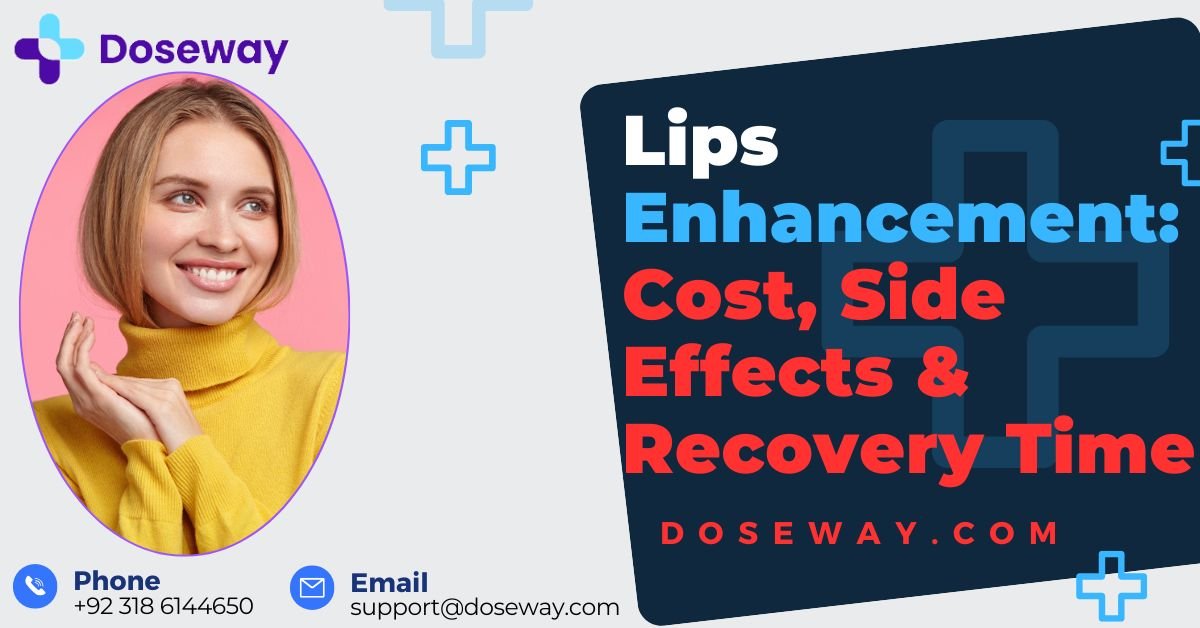
What Factors Influence the Total Cost of Lip Enhancement?
Multiple variables determine the final price of lip enhancement procedures, creating significant cost variations between patients and providers. Understanding these influencing factors helps patients evaluate whether premium prices reflect superior quality or simply geographic and operational markups. The complexity of each case, the expertise of the provider, and the type of facility all contribute to the final investment required.
Practitioner Expertise and Credentials significantly impact cost, with board-certified plastic surgeons and dermatologists commanding higher fees than nurse injectors or general practitioners. This premium reflects extensive training, deeper understanding of facial anatomy, and greater experience managing complications. The provider’s reputation and demand also influence pricing, with sought-after experts in major cities charging premium rates. While choosing a less expensive provider may seem financially appealing, the risks of unsatisfactory results or complications often outweigh the initial savings.
Geographic Location creates dramatic price variations, with coastal metropolitan areas typically charging 20-40% more than midwestern or rural practices. This differential reflects higher overhead costs, including rent, staff salaries, and insurance premiums in desirable locations. Additionally, certain regions have higher concentrations of expert providers, creating competitive markets that may either increase or decrease prices depending on local dynamics. Patients in high-cost areas may consider traveling for procedures, though this introduces additional travel expenses and follow-up challenges.
Procedure Complexity and Materials directly influence costs, with more complex cases requiring additional time, expertise, and materials. Patients seeking subtle natural enhancement typically require less product than those desiring dramatic volume increases. The type of materials used also affects price, with branded hyaluronic acid fillers costing more than generic alternatives. Surgical procedures involve additional costs for operating room facilities, anesthesia services, and implant materials, all contributing to higher initial investments compared to injectable approaches.
What Are the Common Side Effects of Lip Enhancement?
Understanding the potential side effects of lip enhancement procedures represents a crucial component of informed consent. While most side effects are temporary and mild, recognizing both common reactions and rare complications helps patients make educated decisions and properly prepare for recovery. Side effect profiles vary significantly between procedure types, with injectables typically producing fewer and shorter-lasting reactions than surgical options.
Expected Temporary Side Effects occur in nearly all patients undergoing lip enhancement and typically resolve within days to weeks. Swelling represents the most universal reaction, with lip filler patients experiencing significant swelling for 24-72 hours that gradually subsides over 1-2 weeks. Bruising occurs in approximately 60-70% of patients, ranging from minor discoloration to significant bruising that may take 7-14 days to resolve completely. Tenderness, redness, and slight asymmetry during healing are also common temporary side effects that resolve as swelling diminishes.
Less Common But More Concerning Reactions may require medical attention or intervention. Vascular complications represent the most serious risk, occurring when filler is inadvertently injected into blood vessels, potentially blocking blood flow and causing tissue necrosis. While extremely rare in experienced hands, this complication requires immediate treatment with hyaluronidase to dissolve the filler and restore blood flow. Infection represents another uncommon but serious risk, particularly with surgical procedures or non-sterile technique. Allergic reactions, though rare with modern hyaluronic acid fillers, may occur with other materials.
Long-Term Side Effects and Complications may develop weeks, months, or even years after procedures. Granulomas, or small nodules of inflammation, can form as foreign body reactions to filler materials, requiring steroid injections or surgical removal. Migration of filler material away from the injection site can create unnatural-looking results or asymmetry. With permanent implants, issues like capsular contracture, implant shifting, or long-term inflammation may develop. Understanding these potential long-term issues helps patients weigh the risks against the benefits of different enhancement approaches.
Table: Side Effect Comparison Across Procedure Types
| Side Effect | Hyaluronic Acid Fillers | Collagen Stimulators | Fat Transfer | Lip Implants |
|---|---|---|---|---|
| Swelling | 3-7 days | 2-5 days | 7-14 days | 10-21 days |
| Bruising | 5-10 days | 3-7 days | 7-14 days | 10-20 days |
| Pain/Tenderness | 2-5 days | 3-7 days | 5-10 days | 7-14 days |
| Infection Risk | Low (<1%) | Low (<1%) | Moderate (1-2%) | Moderate (1-3%) |
| Vascular Compromise | Very Rare | Very Rare | Rare | N/A |
| Long-Term Nodules | Rare | Possible | Possible | Possible |
How Can You Minimize Risks and Side Effects of Lip Enhancement?
Proactive risk management significantly reduces the likelihood and severity of lip enhancement complications, ensuring safer procedures and more satisfactory outcomes. Strategic patient selection, careful technique, and appropriate aftercare form the foundation of complication prevention. Both patients and providers share responsibility for minimizing risks through thorough preparation and adherence to safety protocols.
Pre-Procedure Preparation dramatically influences complication rates and healing outcomes. Patients should avoid blood-thinning medications, supplements, and substances for 1-2 weeks before procedures, including aspirin, ibuprofen, vitamin E, fish oil, and alcohol. Arnica montana supplements, started several days before treatment, may reduce bruising susceptibility. Choosing an experienced, qualified provider represents the single most important risk-reduction strategy, as technique and anatomical knowledge significantly impact complication rates. Patients with history of cold sores should begin antiviral prophylaxis to prevent herpes simplex reactivation.
During-Procedure Safety Measures employed by skilled practitioners prevent most serious complications. Aspiration before injection helps ensure filler isn’t placed directly into blood vessels. Using appropriate needle size and injection techniques minimizes tissue trauma and vascular injury. Cannulas instead of needles may reduce bruising and vascular complication risks in experienced hands. Limiting the amount of product placed per session reduces excessive pressure on tissues and allows for gradual, natural-looking enhancement. Strict sterile technique prevents infection risk.
Post-Procedure Care Protocols significantly influence healing time and final results. Immediate application of ice packs helps minimize swelling and discomfort during the first 24-48 hours. Sleeping with the head elevated prevents fluid accumulation and excessive morning swelling. Gentle lip movement and avoiding excessive pressure on treated areas promotes even distribution of filler. Following provider-specific aftercare instructions regarding makeup application, exercise restrictions, and oral hygiene prevents disruption of the healing process. Attending scheduled follow-up appointments allows for early intervention if complications arise.

What Does the Typical Lip Enhancement Recovery Timeline Look Like?
Understanding the standard recovery progression after lip enhancement helps patients plan appropriately and recognize normal healing versus potential complications. Recovery experiences vary significantly based on procedure type, individual healing responses, and the extent of enhancement performed. However, most patients follow a predictable recovery pattern with distinct phases of healing and visible changes.
Immediate Recovery Phase (First 72 Hours) represents the most intense period of swelling, discomfort, and visible reaction. During this period, patients typically experience significant swelling that may make lips appear overfilled or distorted. Bruising develops and often appears darkest on day 2-3. Discomfort ranges from mild tenderness to moderate pain manageable with over-the-counter analgesics. Cold compresses provide significant relief during this phase, and most patients prefer to limit social engagements due to the dramatic appearance of freshly enhanced lips.
Early Healing Phase (Days 4-14) involves gradual resolution of initial swelling and bruising. By day 5-7, approximately 50-60% of swelling has typically resolved, revealing more natural-looking lip contours. Bruising fades from dark purple to yellowish-green before disappearing completely. Tenderness diminishes significantly, though lips may still feel firm or slightly numb. Most patients feel comfortable returning to normal social and professional activities after 7-10 days, though some residual swelling persists. Final results begin to emerge as swelling continues to subside.
Long-Term Settlement Phase (Weeks 3-12) involves complete resolution of subtle swelling and integration of enhancement materials with natural tissues. With fillers, lips soften and settle into their final shape and position during this period. Surgical procedures like implants or fat transfer require longer settlement periods, with final results emerging after 3-6 months as inflammation fully resolves and tissues adapt to implants or establish blood supply with transferred fat. Patients should wait until complete settlement before evaluating final results or considering touch-up procedures.
What Aftercare Steps Are Essential for Optimal Lip Enhancement Results?
Proper aftercare significantly influences both short-term healing and long-term satisfaction with lip enhancement results. Following evidence-based aftercare protocols minimizes complications, reduces downtime, and ensures optimal integration of enhancement materials with natural tissues. Aftercare requirements vary by procedure type but share common principles supporting tissue healing and result preservation.
Immediate Post-Procedure Protocols (First 24 Hours) focus on managing swelling and preventing complications. Intermittent ice application for 10-15 minutes per hour reduces swelling and provides analgesic effects. Avoiding excessive lip movement, including exaggerated expressions, talking, or chewing gum, prevents product displacement. Sleeping with the head elevated on extra pillows minimizes fluid accumulation overnight. Gentle cleaning with recommended products maintains hygiene without disrupting treated areas. Avoiding makeup application prevents bacterial introduction to injection sites.
Early Recovery Guidelines (Days 2-14) support continued healing while protecting results. Transitioning from ice to warm compresses after 48 hours can promote circulation and bruise resolution. Avoiding strenuous exercise, saunas, steam rooms, and excessive heat prevents increased swelling and inflammation. Gentle massage techniques, if recommended by providers, can help smooth irregularities and promote even distribution of fillers. Using specialized lip care products with gentle ingredients maintains hydration without causing irritation. Protecting lips from sun exposure with SPF products prevents pigmentation changes during healing.
Long-Term Maintenance Practices (Beyond 2 Weeks) preserve results and support tissue health. Consistent sun protection prevents UV damage that can break down filler materials more quickly. Maintaining good hydration supports skin and lip health from within. Avoiding excessive pressure on lips during sleep or activities prevents product displacement. Scheduling regular follow-up appointments allows providers to assess longevity and plan maintenance treatments appropriately. Using recommended skincare products around the mouth area maintains skin quality and extends enhancement results.
How Do You Choose the Right Lip Enhancement Provider?
Selecting an appropriate provider represents the most critical decision in the lip enhancement process, directly influencing safety, results, and overall satisfaction. With the growing popularity of cosmetic procedures, numerous practitioners offer lip enhancement services, creating a challenging landscape for consumers to navigate. Understanding credential differences, experience levels, and safety protocols helps patients identify qualified providers capable of delivering beautiful, natural-looking results.
Essential Credentials and Qualifications vary by procedure type but share common standards of training and certification. For injectable treatments, board certification in dermatology or plastic surgery indicates extensive training in facial anatomy and cosmetic procedures. Nurse injectors should work under physician supervision with specific training in filler techniques. For surgical procedures, board certification in plastic surgery with specific experience in facial procedures is essential. Verification of credentials through state medical boards and specialty boards provides objective confirmation of qualifications.
Experience and Specialization significantly impact technical skill and aesthetic judgment. Providers who regularly perform lip enhancement develop refined techniques and deeper understanding of subtle aesthetic considerations. Asking to see before-and-after photos of previous patients helps evaluate consistency and aesthetic style. Inquiring about complication rates and management experience provides insight into safety records. Providers who regularly attend continuing education in cosmetic procedures demonstrate commitment to staying current with evolving techniques and safety standards.
Communication and Comfort Level profoundly influence the overall experience and satisfaction. During consultations, providers should listen carefully to patient concerns and goals while offering realistic expectations. The consultation should include thorough discussion of risks, benefits, alternatives, and costs without pressure to proceed. The clinical environment should reflect professional standards with appropriate emergency equipment and protocols. Patient reviews and testimonials provide valuable insight into actual experiences, though should be considered alongside objective qualifications and before-and-after results.

What Are the Key Differences Between Various Lip Filler Brands?
The lip filler market includes multiple brands with distinct characteristics, advantages, and ideal applications. Understanding these differences helps patients select products aligned with their aesthetic goals and tissue characteristics. While all hyaluronic acid fillers share the same basic component, manufacturing differences create significant variations in performance, longevity, and feel.
Juvéderm Family of Fillers includes several products specifically designed for lip enhancement. Juvéderm Ultra XC features smaller particles for smooth, natural-looking volume with integrated lidocaine for comfort. Juvéderm Volbella XC offers finer consistency ideal for lip line definition and subtle volume with minimal swelling. Juvéderm Vollure XC provides intermediate viscosity suitable for both volume and structure. The Juvéderm range utilizes Vycross technology, creating highly cross-linked hyaluronic acid with potentially longer duration than earlier generations.
Restylane Product Line offers alternative formulations with distinct handling characteristics. Restylane Silk, specifically FDA-approved for lip enhancement, features smaller particles for smooth placement in delicate lip tissue. Restylane-L contains lidocaine for increased comfort during injection. Restylane products utilize NASHA technology, creating gel particles with specific size distributions for different treatment areas. Some practitioners prefer Restylane for its precision in defining the vermilion border and creating natural-looking structure.
Emerging and Specialty Fillers expand the options for specific patient needs. Belotero Balance features unique polydensified matrix technology allowing seamless integration with natural tissue, reducing visibility under the skin. Revanesse Versa utilizes cross-linked hyaluronic acid with integrated lidocaine in a versatile formulation suitable for both volume and definition. RHA Fillers feature resilient hyaluronic acid designed to better accommodate dynamic facial movements while maintaining natural appearance. Understanding these technological differences helps match patient goals with appropriate product characteristics.
Can Lip Enhancement Be Reversed or Corrected If Unsatisfied With Results?
The possibility of correction or reversal represents an important consideration for patients considering lip enhancement, particularly first-time recipients. Fortunately, most modern lip enhancement approaches include options for correction, though the ease and completeness of reversal varies significantly by technique and timing. Understanding correction options provides reassurance and guides appropriate action if results don’t meet expectations.
Hyaluronic Acid Filler Reversal offers the most straightforward correction approach through enzymatic dissolution. Hyaluronidase injections effectively break down hyaluronic acid fillers within hours to days, completely reversing results. This reversibility represents a significant safety advantage of hyaluronic acid fillers over permanent options. However, hyaluronidase also breaks down natural hyaluronic acid in tissues, potentially causing over-correction or requiring careful titration. Multiple treatment sessions may be necessary for complete reversal, particularly with large volumes of filler or highly cross-linked products.
Surgical Revision Options for unsatisfactory fat transfer or implants involve more complex approaches. Fat transfer results can be partially adjusted through careful liposuction of excess transferred fat, though this requires surgical precision to avoid irregularities. Lip implants can be removed or replaced if size, position, or feel proves unsatisfactory. Revision surgery typically involves similar recovery to initial procedures with associated costs and downtime. The extent of correction possible depends on tissue changes that occurred during the initial healing process.
Non-Surgical Correction Techniques can address minor irregularities without complete reversal. Massage techniques can help smooth lumpiness or uneven distribution in filler. Strategic additional filler placement can improve symmetry or redefine borders in cases of under-correction. Steroid injections can reduce inflammatory nodules or excessive scar tissue. Laser treatments can improve surface texture or pigmentation issues. The appropriate correction approach depends on the specific issue, timing since procedure, and materials used in the original enhancement.
What Are the Latest Advancements in Lip Enhancement Technology?
The field of lip enhancement continues to evolve with technological innovations improving safety, results, and patient experience. Recent advancements focus on longer-lasting materials, more natural outcomes, reduced downtime, and enhanced safety profiles. Staying informed about emerging technologies helps patients access the most current treatment options and make educated decisions about their cosmetic care.
Next-Generation Filler Materials represent significant improvements over earlier products. The RHA (Resilient Hyaluronic Acid) collection features fillers specifically engineered to accommodate dynamic facial movements while maintaining natural appearance. VYCROSS technology used in Juvéderm products creates more cohesive gels with potentially longer duration and smooth integration. High-G prime fillers offer greater lifting capacity for structural definition without excessive volume. These material science advancements create more tailored approaches to addressing specific aesthetic concerns.
Enhanced Safety Technologies minimize risks associated with lip enhancement. Aspiration verification systems provide visual confirmation when needles are positioned within blood vessels. Blunt-tip microcannulas reduce vascular injury risk while allowing precise product placement. Advanced imaging techniques help practitioners visualize vascular anatomy before treatment. These safety innovations, combined with improved training, contribute to declining rates of serious complications despite increasing procedure volumes.
Regenerative Approaches represent the frontier of lip enhancement, focusing on stimulating natural tissue rather than adding foreign material. Platelet-rich plasma (PRP) injections harness growth factors from the patient’s own blood to stimulate collagen production and tissue regeneration. Stem cell-enriched fat transfer techniques improve survival of transferred fat cells for more predictable long-term volume. Biostimulatory agents encourage natural collagen formation for gradual, natural-looking enhancement. These approaches appeal to patients seeking subtle, natural results without traditional filler materials.

How Does Age Affect Lip Enhancement Options and Results?
Age-related changes in lip structure and surrounding tissues significantly influence appropriate enhancement approaches and expected outcomes. Understanding these anatomical changes helps tailor treatments to address specific aging concerns while creating natural-looking results appropriate for the patient’s overall facial appearance. Lip enhancement strategies differ substantially between younger patients seeking primarily volume augmentation and mature patients addressing comprehensive perioral aging.
Younger Patients (20s-30s) typically seek enhancement for naturally thin lips or subtle asymmetry with generally good skin elasticity and minimal aging changes. For this demographic, conservative volume enhancement with hyaluronic acid fillers typically produces excellent results with minimal downtime. Focus often centers on defining the vermilion border, enhancing the cupid’s bow, and adding proportional volume while maintaining natural appearance. Younger patients typically require less product and experience faster recovery with fewer complications than older patients.
Middle-Aged Patients (40s-50s) present with early aging changes including volume loss, vermilion border fading, and developing perioral rhytids (lip lines). Treatment strategies typically combine lip volume restoration with border definition and perioral rejuvenation. Layering techniques using different filler consistencies address multiple concerns simultaneously. Collagen-stimulating treatments may provide enhanced benefits for this demographic by addressing both volume loss and skin quality. Combination approaches with laser treatments or skin tightening often produce optimal comprehensive rejuvenation.
Mature Patients (60+) demonstrate significant age-related changes including substantial volume loss, border indistinction, vertical rhytids, and tissue descent. Enhancement strategies must address both restoration of lost volume and support for anatomical structures. Denser fillers provide structural support while thinner products address surface lines. Surgical options may be considered for significant volume restoration when fillers would require excessive product. Realistic expectations are essential, as complete reversal of aging changes may not be possible or natural-looking.
What Are the Psychological Considerations of Lip Enhancement?
The decision to undergo lip enhancement involves significant psychological dimensions that influence both motivation for treatment and satisfaction with results. Understanding these psychological factors helps patients examine their expectations, choose appropriate procedures, and achieve positive emotional outcomes from cosmetic enhancement. Research demonstrates that successful cosmetic procedures can improve self-esteem and quality of life when performed for appropriate reasons with realistic expectations.
Motivation and Expectations profoundly impact psychological outcomes following lip enhancement. Patients seeking improvement in specific aesthetic concerns typically report higher satisfaction than those hoping to resolve interpersonal or professional problems. Realistic understanding of what procedures can and cannot achieve prevents disappointment and psychological distress. The concept of “proportionate enhancement” – improving features while maintaining facial harmony – typically produces more satisfying psychological outcomes than dramatic transformations that don’t align with overall facial structure.
Body Dysmorphic Disorder (BDD) Screening represents an important ethical consideration for providers. BDD involves preoccupation with perceived defects in appearance that are not observable or appear slight to others. Performing cosmetic procedures on patients with untreated BDD typically leads to poor satisfaction and repeated requests for additional procedures. Reputable providers screen for BDD characteristics during consultations and may decline treatment or recommend psychological evaluation when appropriate. Understanding this distinction helps patients evaluate their own motivations and seek appropriate care.
Social and Cultural Considerations influence both the decision to undergo enhancement and satisfaction with results. Cultural standards of beauty vary significantly, affecting ideals of lip size and shape. Social media influence has created increased interest in specific lip aesthetics that may not suit all facial structures. Discussing these influences during consultations helps align expectations with individual facial anatomy rather than trending aesthetics. Support from friends and family also impacts psychological adjustment to changed appearance following procedures.
How Can Our Lip Enhancement Risk Calculator Help Your Decision Process?
Our proprietary Lip Enhancement Risk Calculator represents an innovative tool designed to help prospective patients understand their individual risk profiles and make informed decisions about cosmetic procedures. This comprehensive assessment tool analyzes multiple factors including medical history, anatomical considerations, and lifestyle factors to generate personalized risk assessments and recommendations. Understanding how to interpret and utilize these results maximizes the calculator’s value in your decision-making process.
Personalized Risk Assessment provides individualized evaluation of potential complication risks based on your specific health profile. The calculator analyzes factors including bleeding tendencies, healing capacity, immune function, and anatomical characteristics to estimate your personal risk for common complications like bruising, swelling, infection, and vascular issues. This personalized approach moves beyond general statistics to provide relevant information for your specific situation. Understanding your baseline risk profile helps you make appropriate procedure choices and preparation strategies.
Procedure-Specific Recommendations guide selection of enhancement approaches aligned with your risk profile and aesthetic goals. The calculator evaluates how different procedure types – from hyaluronic acid fillers to surgical options – match your individual characteristics and concerns. This objective assessment helps narrow options to those most likely to produce satisfactory results with acceptable risk levels. The recommendations include specific considerations for each procedure type, including preparation strategies to optimize safety and results.
Preparatory Guidance outlines specific steps to reduce your identified risks before procedures. Based on your assessment results, the calculator generates personalized preparation protocols addressing medication adjustments, supplement regimens, and lifestyle modifications shown to reduce complication risks. Following these evidence-based recommendations can significantly improve your procedural experience and healing process. The guidance includes timelines for implementing various preparatory measures to ensure optimal effect at the time of your procedure.

FAQs
How long do lip fillers typically last?
Lip filler duration varies by product and individual metabolism, but most hyaluronic acid-based fillers maintain optimal results for 6-12 months. Factors influencing longevity include the specific product used, injection technique, individual metabolic rate, lifestyle factors, and the amount of product placed. Thicker, more cross-linked fillers typically last longer than thinner products, though they may feel firmer initially. Maintenance sessions can extend overall duration by treating areas as they begin to soften rather than waiting for complete dissipation.
What is the most natural-looking lip enhancement option?
Hyaluronic acid fillers placed conservatively by experienced injectors typically produce the most natural-looking results. Specific products like Juvéderm Volbella and Restylane Silk are formulated for subtle, natural enhancement with minimal swelling. The technique matters as much as the product – experienced providers focus on enhancing natural anatomy rather than simply adding volume. Structural approaches that define the vermilion border, support the philtrum columns, and create proportional volume typically appear more natural than simple volume addition.
Can lip enhancement help with asymmetrical lips?
Yes, lip enhancement can significantly improve lip asymmetry through strategic product placement. Experienced providers use filler to balance uneven vermilion borders, correct volume discrepancies between upper and lower lips, and improve harmony between lip segments. Asymmetry correction requires precise technique and sometimes different approaches on each side of the lips. Minor natural asymmetry exists in most faces, and complete symmetry may not appear natural, but significant asymmetries can be dramatically improved with careful enhancement.
At what age should someone consider lip enhancement?
There is no specific appropriate age for lip enhancement, as decisions should be based on individual anatomy and concerns rather than chronological age. Most providers recommend waiting until at least 18 years old when facial growth is complete. Younger patients typically seek enhancement for naturally thin lips, while older patients address age-related volume loss and border fading. The appropriate approach varies significantly by age, with younger patients often benefiting from subtle definition while older patients may require more comprehensive restoration.
How soon can I wear lipstick after lip filler?
Most providers recommend waiting 24-48 hours before applying lipstick to allow injection sites to fully close and reduce infection risk. When resuming lipstick, choose new or thoroughly cleaned products to minimize bacterial exposure. Gentle application without pulling or stretching the lips prevents disruption of healing tissues. Matte formulas may be preferable initially as they require less pressure during application than creamy formulas. Avoid long-wearing formulas that require vigorous removal during the first week after treatment.
What is the difference between Russian and French lip techniques?
The Russian lip technique focuses on creating vertical projection and a pronounced cupid’s bow using multiple small injections, while the French technique emphasizes natural-looking horizontal volume and border definition. Russian technique typically creates more dramatic, structured results with significant elevation, while French technique produces softer, more natural enhancement. The appropriate approach depends on individual anatomy and aesthetic goals, with some patients benefiting from elements of both techniques tailored to their specific features.
Are there non-invasive alternatives to lip fillers?
Yes, several non-invasive alternatives can provide subtle lip enhancement without injectables. Lip plumping devices using suction create temporary swelling that lasts several hours. Topical plumping products with ingredients like hyaluronic acid, peptides, and stimulants provide temporary fullness through hydration and mild irritation. Laser treatments can improve lip texture and stimulate collagen for gradual improvement. Fat transfer from the patient’s own body represents a more permanent surgical alternative to fillers. The effectiveness of these alternatives varies significantly, with most providing more subtle results than injectable fillers.
Recommended Affiliate Products/Brands
- Juvéderm Fillers – High commission rates through medical aesthetic partner programs
- Restylane Products – Competitive affiliate commissions through specialty pharmacy partnerships
- Cosmedica Hyaluronic Acid Serum – Effective topical alternative with recurring revenue potential
- Revision Skincare Vitamin C Serum – Complementary product for perioral rejuvenation
- SkinMedica HA5 Rejuvenating Hydrator – Premium skincare with excellent conversion rates
- ZO Skin Health Growth Factor Serum – High-ticket item with substantial commission per sale
- Galderma Cosmetic Fillers – Manufacturer direct affiliate program for medical professionals

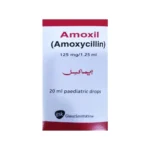



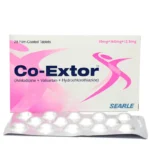
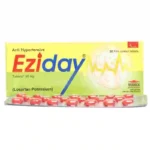
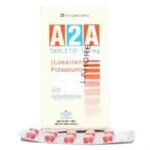
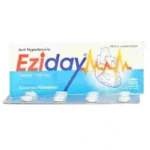
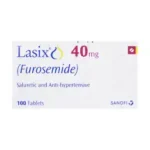

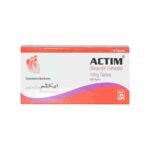
Add a Comment